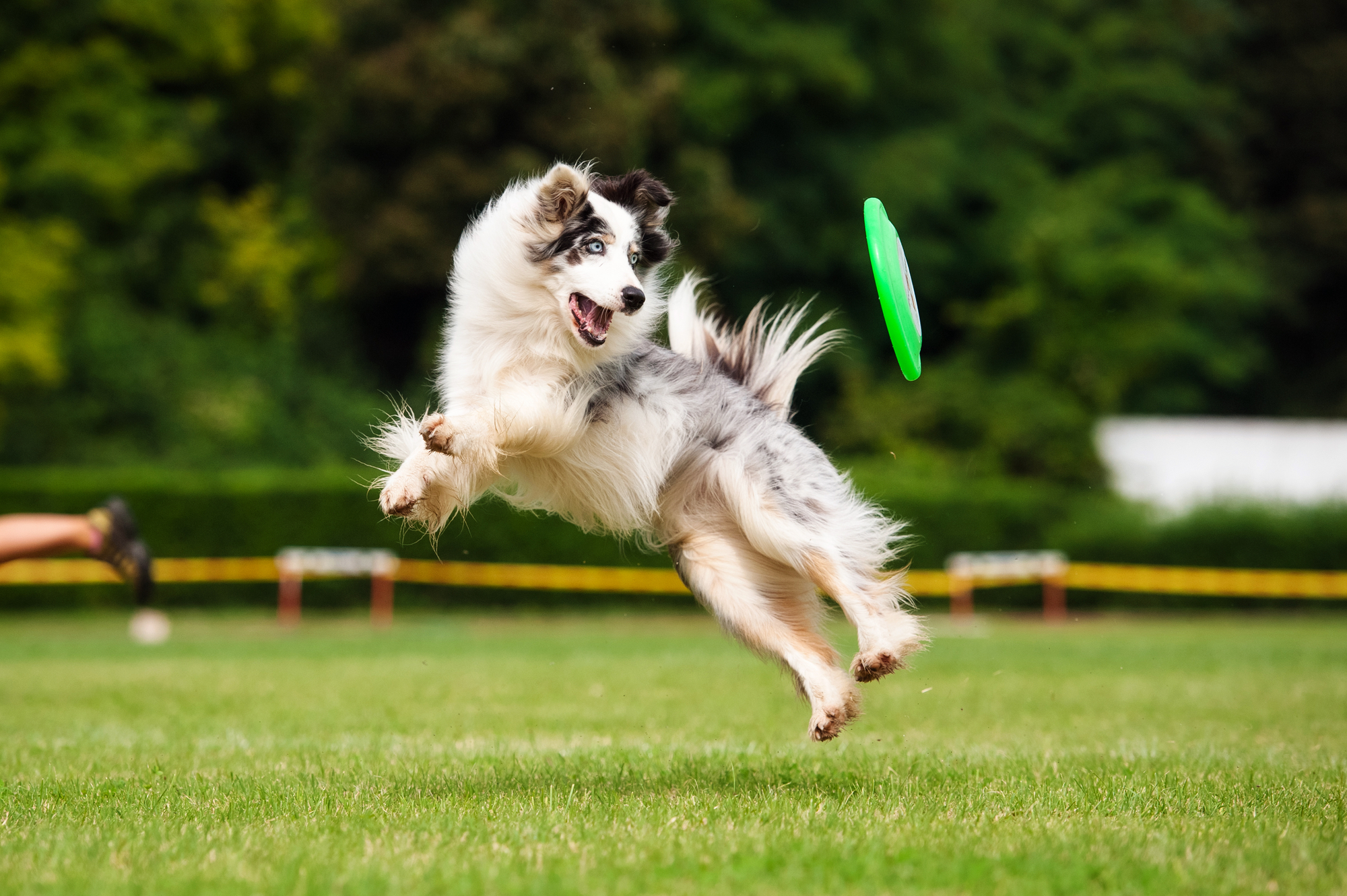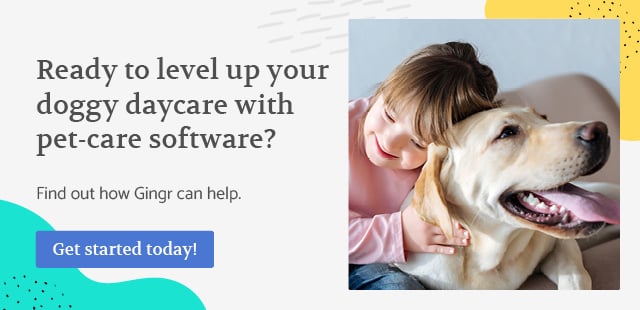From the outside looking in, the task of managing a doggy daycare may seem easy. After all, caring for adorable pups all day sounds like a dream come true.
However, the reality of pet-care management is a little more complicated. Sure, there’s plenty of fun to be had caring for your community’s furry friends. But there’s also a great deal of behind-the-scenes planning, delegation, and investment that goes into creating a successful doggy daycare.
Whether you’re a veteran of the pet-care world or you’re just starting your first dog daycare, managing your own daycare will have its challenges. Fortunately, there are a few simple managerial best practices you can implement to improve your business and streamline operations.
Over the course of this guide, we’ll cover six essential tips to help any pet-care business reach its fullest potential:
- Perfect Your Dog Daycare Business Plan
- Consider Your Customers’ Perspectives
- Create a Robust Employee Training Program
- Evaluate (and Share!) Pup Behavior
- Offer Special Rewards, Products, and Services
- Invest in Effective Pet-Care Software
From staff onboarding to pup training, managing a doggy daycare is always going to be a full-time commitment. However, with the right strategies and tools, the juggling act of caring for your local pups will become a walk in the park. Let’s dive in!
1. Perfect Your Dog Daycare Business Plan
When is the last time you took a good, long look at your dog daycare business plan? If your answer lands anywhere between “I’m not sure” and “it’s been a while,” then now’s the time to either find or start writing out your plan.
Your business plan is essentially a roadmap for all of your business operations, from where you set up shop to your chosen pet business insurance. Here are some of the most important considerations that your business plan should take into account:
- Your central business objectives
- Branding and marketing strategies
- Choice of location and facilities
- Pricing, operating profits, and budgeting
- Your local competition and community needs
With a clear and well-organized plan, you set the tone for all of your future operations, allowing you to better manage your finances, delegate responsibilities, and organize your business.
For more information on how to create the ideal pet-care business plan, check out our Getting Started Guide to Dog Daycare Business Plans.
2. Consider Your Customers’ Perspectives
Any doggy daycare manager, staff member, or attendant knows how important front-facing service is to pet care. When a potential customer walks through your doors, they will immediately begin making snap judgments about whether or not they can entrust you with their furry family member.
This is what makes it so important to take a walk in your customers’ shoes. Consider what aspects of your business will make you appear as trustworthy as possible to both new and returning customers.
For example, consider these easy methods to wow your customers and secure their business:
- Put customer service first with a friendly, attentive team of staff
- Promote your safety and training certifications
- Set up an easy, organized grooming appointment scheduling system
- Be responsive to customer inquiries, both in-person and remotely
- Share updates on pet progress, appointments, and future opportunities
- Ask for feedback on customer experiences
By understanding the wants and needs of customers, you’ll be far better equipped to secure consumer loyalty, constantly improve the daycare experience, and make a name for yourself in your community!
3. Create a Robust Employee Training Program
It takes a special group of staff members to handle the hustle of working in a doggy daycare. After all, an average doggy daycare attendant is asked to manage a variety of tasks, like making sure that your pups are fed, groomed, and well-looked after during their stay.
A thorough interview process can help to ensure that you bring on qualified team members. However, a comprehensive onboarding process is what’s really going to engage your employees and fill in their knowledge gaps.
Orally communicating your daycare’s rules and requirements is a good start, but consider these additional ways to enrich your training:
- Offer downloadable manuals and training guides
- Share demos and video resources
- Integrate an employee learning management system
- Start a mentorship program to buddy up new and experienced staff
The training process may begin on day one of staff members’ employment, but remember that there’s always room to learn and grow—especially as new trends hit the pet-care industry!
Remember to regularly communicate with your employees and check their progress. The right pet-care business software will even enable you to keep a pulse on your team with to-do notifications, daily checklists, and customizable workflows.
4. Evaluate (and Share!) Pup Behavior
When pet owners drop off their pups and enter them into your care, they’re bound to be curious about how their little ones are holding up throughout the day (or days!) of grooming, playing, and training.
The solution for this is simple: record the behavior of dogs in your daycare and share these updates with their loved ones! This will not only keep your customers in the loop about important developments but also simplify future appointments and add a personal touch to your business.
You can even go the extra mile and impress customers even further by creating customized pet report cards with comments, photos, and videos of their pups!
5. Offer Special Rewards, Products, and Services
As your customers walk out the door with their content pups, they should also leave with a positive and memorable experience that differentiates you from your competition.
A rewards program is a great, simple way to make your dog daycare more valuable and unique to customers. With punch cards or a digital point system, you’re incentivizing people to keep coming back until they earn that discounted grooming that’s only a few hole punches away.
As we mentioned, pet report cards are another favorite among customers and dog daycare managers alike. They allow you to create an organized clientele history and give important updates and digital memorabilia for customers’ to remember their experiences.
Finally, branded merchandise is a particularly effective way to make your mark, increase brand recognition, bring in greater revenue, and encourage customer loyalty. For example, customers would love to go home with a clean, fun design printed onto these items:
- T-shirts and caps
- Collars, bandanas, and leashes
- Frisbees, balls, and pet toys
- Carriers and waste pickup bags
With these special programs and incentives, your customers won’t be quick to forget your doggy daycare.
6. Invest in Effective Pet-Care Software
For people running tiny, homemade doggy daycares out of their backyards, you could probably manage well enough with a spreadsheet and a cash lockbox.
However, for any enterprising doggy daycare managers who hope to grow their business beyond a handful of pooches, you’ll eventually need pet-care software to manage your increasingly hectic workload.
After all, an effective pet-care software solution won’t just help you to stay organized. It can streamline employee management, enhance the customer experience, and even diversify your marketing strategies.
Just be sure to ask the following questions before choosing your pet-care software:
- How do I want to communicate with my customers?
- What payment options do I want to offer?
- What organizational tools do I need?
- Is my software choice regularly updated?
Once you’ve thoroughly reviewed your business’s unique needs, it will be far easier to boil the essential features you need in pet-care software, like customer portals or information tracking, and make an informed decision about what’s best for your daycare.
Wrapping Up
Running a clean, friendly, and efficient doggy daycare isn’t as easy as renting out a bit of green space and putting up posters around your neighborhood. The best daycares take time, consideration, and dedicated pet-care tools.
We hope that these dog daycare management tips have helped to shed some light on this process and the steps ahead of you for continued pet-care success. With these insights, you should be one step closer to reaching your fullest business potential!
Want to learn more about doggy daycare management? No problem. Check out these resources:
- Dog Daycare Business Plan: The 2022 Getting Started Guide. Dive in and learn everything there is to know about creating and perfecting your dog daycare business plan.
- Starting a Dog Daycare: Everything You Need to Know. Take a look at our definitive guide to starting your own dog daycare, from licensing to marketing best practices!
- How to Choose Pet-Care Software: 4 Questions to Ask Yourself. Effective pet-care software can revolutionize your business. However, which software is right for you? Read on to find out.
Subscribe to the Gingr Blog







